Comments / Questions (36)
![]() Susan Latham wrote:
Susan Latham wrote:
Love this pattern but I am confused with round 5 on the flower motif. I have 7 petals when it states I should have 8. What am I doing wrong? Have pulled out so many times. Is it a printing error?
23.10.2016 - 12:32DROPS Design answered:
Dear Mrs Latham, make sure you are crocheting a total of 8 times "5 ch, 1 dc" as written under this round. Happy crocheting!
24.10.2016 - 14:36
![]() Petea wrote:
Petea wrote:
Vid kantstycket i sidan, vart ska man mäta "kanten"? I mitten vid nacken eller ute vid ärmhålan?
22.07.2016 - 18:43DROPS Design answered:
Hej Petea. Det er vel lige meget da jeg vil mene du haekler det samme over alle maskerne? Ellers maal paa det breddeste stykke.
26.07.2016 - 16:45
![]() Christine Lecoq wrote:
Christine Lecoq wrote:
Bonjour Si les carrés mesurent 8 cm, la e dos mesure donc en taille xl : 4 x 8 = 32 cm. Cela me paraît petit. N'y a t'il pas une erreur sur l'echantillon ? Il me faut au moins 50 cm pour le dos. Je vous remercie pour votre réponse.
17.08.2015 - 07:10DROPS Design answered:
Bonjour Mme Lecoq, chaque carré doit bien mesurer 8 cm de côté, l'assemblage se fait avec 1 ms dans 1 carré, 1 ml, 1 ms dans l'autre carré et ajoutera de la largeur et de la longueur. Le tour de brides crocheté ensuite tout autour du dos donnera les mesures finales du schéma. Bon crochet!
17.08.2015 - 09:58
![]() Ellen Davidson wrote:
Ellen Davidson wrote:
Drops. 129-10 xxl size not write not enough loops at sides for extra lenth please correct good pattern just needs adjusting
19.04.2015 - 01:28DROPS Design answered:
Dear Mrs Davidson, pattern is correct: the edge on the side is worked on each side starting from mid top of back + 53 ch, inc 16 tr evenly when piece measures 4, 8, 12, 16 and 20 cm = 177 tr. Piece is then sewn to edge piece mid back then remaining sts are sew to the back piece (= armhole). Happy crocheting!
20.04.2015 - 13:51
![]() Jani wrote:
Jani wrote:
Das verstehe ich leider überhaupt nicht. 4 cm ab wo? Ab der 1. genau erklärten Reihe oder erst ab sozusagen 3.? Und in welcher Reihe soll ich nun die Stäbchen gleichmäßig aufnehmen, in einer 1. oder 2. ?
15.10.2013 - 21:10DROPS Design answered:
Liebe Jani, es sind 4 cm Gesamthöhe des Seitenteils gemeint (also ab dem neuen Lm-Anschlag gemessen) und es wird in einer Stb-Reihe zugenommen.
16.10.2013 - 07:46
![]() Batoul Fawaz wrote:
Batoul Fawaz wrote:
Plz reply iwant to ask about increasing dc :where i start inceasing? in the biginning of the row??
30.09.2013 - 18:15Batoul Fawaz wrote:
I want to ask about increasing dc i don't know where starting in the begining of the row??
30.09.2013 - 18:07DROPS Design answered:
Deear Mrs Fawaz, Increase have to be done evenly on the row, ie work approx same number of sts on the row between each inc. Happy crocheting!
01.10.2013 - 08:39Valeria wrote:
Lo terminé y quedó muy lindo, las explicaciones son claras y se puede hacer con facilidad. La lana se apelmaza demasiado para mi gusto, aunque los colores son muy lindos.
11.12.2012 - 20:54Lara wrote:
This is a great piece, casual with a twist... I love it! Would very much appreciate diagrams for flower grannies; like so many others I prefer working from a diagram rather then from a written sequence.
09.08.2012 - 18:07SUSANA wrote:
Me encanta el bolero y ya hice las flores y me es fácil entender todo pero no entiendo como unir las flores de la espalda agradezco me puedan ayudar no comprendo bien la explicación
08.10.2011 - 03:27
Rosevest#rosevest |
|
 |
 |
Crochet DROPS bolero with flower squares on the back in ”Delight”. Size: XS - XXL
DROPS 129-10 |
|
|
CROCHET INFO: Replace first dc on every row/round with ch 3. Finish every round with 1 sl st in 3rd ch from beg of round. INCREASE TIP: Inc 1 dc by working 2 dc in 1 dc. CROCHET SQUARE WITH FLOWER: Ch 4 on hook size 3.5 mm and form a ring with 1 sl st in first ch. ROUND 1: * 1 sc in ch-ring, ch 3 *, repeat from *-* a total of 3 times and finish round with 1 sl st in first sc from beg of round = 3 ch spaces. ROUND 2: Crochet as follows in every ch space: 1 sc, 3 dc and 1 sc, finish with 1 sl st in first sc = 3 leaves. Turn piece - work next round on the back of the flower. ROUND 3: ch 1, 1 sc in 1st sc from 1st round, ch 4, 1 sc at the bottom of the 2nd dc on first leaf from 2nd round, ch 4, 1 sc in 2nd sc from 1st round, ch 4, 1 sc at the bottom of the 2nd dc on second leaf from 2nd round, ch 4, 1 sc in 3rd sc from 1st round, ch 4, 1 sc in the bottom of the 2nd dc on third leaf from 2nd round, ch 4, 1 sl st in first ch from beg of round = 6 ch spaces. Turn piece - work next round on the front of the flower. ROUND 4: Crochet as follows in every ch space: 1 sc, 5 dc and 1 sc, finish round with 1 sl st in first sc from beg of round = 6 leaves. Turn piece - work next round on the back of the flower. ROUND 5: ch 1, 1 sc in 1st sc from 3rd round, ch 5, 1 sc at the bottom of the 4th dc on first leaf from 4th round, ch 5, 1 sc at the bottom of the 3rd dc on second leaf from 4th round, ch 5, 1 sc at the bottom of the 2nd dc on third leaf from 4th round, ch 5, 1 sc between 3rd and 4th leaf from 4th round, ch 5, 1 sc at the bottom of the 4th dc on fourth leaf from 4th round, ch 5, 1 sc at the bottom of the 3rd dc on fifth leaf from 4th round, ch 5, 1 sc at the bottom of the 2nd dc on sixth leaf from 4th round, ch 5, 1 sl st in first ch from beg of round = 8 ch spaces. Turn piece - work next round on the front of the flower. ROUND 6: Crochet as follows in every ch space: 1 sc, 1 dc, 4 tr, 1 dc and 1 sc, finish round with 1 sl st in first sc from beg of round = 8 leaves. Turn piece - work next round on the back of the flower. ROUND 7: ch 1, 1 sc in 1st sc on 5th round, * ch 10, 1 sc in next sc on 5th round *, repeat from *-* a total of 7 times, finish with ch 10 and 1 sl st in first ch from beg of round = 8 ch spaces. Turn piece, finish the square on the front. ROUND 8: Work sl st until mid of first ch space, * ch 12, 1 sc in next ch space, ch 5, 1 sc in next ch space *, repeat from *-* a total of 3 times, ch 12, 1 sc in next ch space, ch 5, 1 sl st in sl st at top of first ch space from previous round. ROUND 9: In every large ch space work as follows: 5 sc, ch 2 and 5 sc and in each of the small ch spaces work 5 sc, finish with 1 sl st in first sc from beg of round. -------------------------------------------------------- BACK PIECE: Work 9-12-16 CROCHET SQUARES - see explanation above. Place the squares with 3-4-4 squares in the width and 3-3-4 squares in height. Crochet squares tog - crochet squares tog alongside and then across as follows: Place 2 squares tog WS against WS and work tog from RS as follows: 1 sc in corner of first square, ch 1, 1 sc in corner of next square, ch 1, 1 sc in next st on first square, ch 1, 1 sc in next st on second square, ch 1, 1 sc in next st on first square, ch 1, 1 sc in next st on second square etc., finish when 1 sc has been worked in the last corner on both squares, fasten off. NOTE: Make sure that the transitions between every square are pretty when the squares are worked tog alongside. Then work 1 round with dc around the entire back piece as follows (start at the top in the right corner): 1 sc in the corner, ch 3 (= 1 dc), then work 75-83-91 dc along the upper edge, then work 56-56-74 dc down along the side (make sure that the corners are worked loosely), then 72-78-86 dc along the bottom edge and 56-56-74 dc up along the side. Finish with 1 sl st in 3rd ch from beg of round. Fasten off. EDGE PIECE IN THE SIDE: Start mid back of neck. Work 1 dc in each of the 38-42-46 dc at the top along the back piece, then ch 45-49-53 (= armholes). Turn piece. Work 1 dc in 4th ch from hook, then work 1 dc in every ch and 1 dc in every dc at the top of back until mid back of neck = 81-89-97 dc. Continue to work back and forth as follows: ROW 1: ch 3 (= 1 dc), * ch 1, skip 1 dc, 1 dc in next dc *, repeat from *-*. ROW 2: 1 dc in every dc and 1 dc in every ch. Repeat these 2 rows upwards - AT THE SAME TIME when edge measures approx. 4 cm / 1½" (adjust so that next row is a row with dc only), inc 16 dc evenly - READ INCREASE TIP - repeat inc when piece measures approx. 8, 12 and 16 cm / 3", 4¾" and 6¼" = 145-153-161 dc. SIZE XL/XXL: Repeat inc when piece measures 20 cm / 8" = 177 dc. Work until edge measures approx. 18-20-22 cm / 7"-8"-8¾" - adjust after 1 row with dc. Fasten off. Work the same way in the other side. EDGE PIECE MID BACK: Start with 1 sc in the corner at the bottom of the side. Ch 3 (= 1 dc), then work 1 dc in each of the 71-77-85 dc = 72-78-86 dc. Continue with 1st row and 2nd row as explained above back and forth until approx. 13-17-13 cm / 5"-6¾"-5" have been worked from the squares - adjust after 1 row with dc. Fasten off. ASSEMBLY: Sew tog mid back of neck. Sew edge to edge in front loop of outermost st to avoid a chunky seam. Sew tog side piece and edge piece mid back, start in outer edge and sew inwards. Sew remaining piece on side piece to back piece. Work the same way in the other side. PICOT BORDER: Work on hook size 3.5 mm/E/4 on the outer edge around the entire edge. Start mid back of neck and work as follows: 1 sc, * skip 2 sts, 3 dc in next st, ch 1, 1 dc in same st, ch 1, 3 dc in same st, skip 2 sts, 1 sc in next st *, repeat from *-* around the entire edge and finish with 1 sl st in sc from beg of round. Work the same way around the armholes. |
|
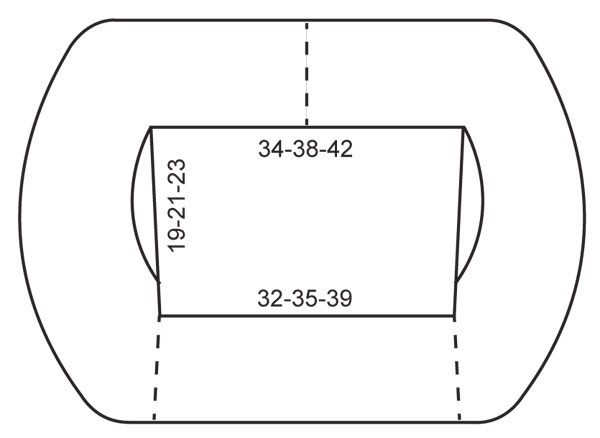 |
|
Have you finished this pattern?Tag your pictures with #dropspattern #rosevest or submit them to the #dropsfan gallery. Do you need help with this pattern?You'll find 5 tutorial videos, a Comments/Questions area and more by visiting the pattern on garnstudio.com. © 1982-2026 DROPS Design A/S. We reserve all rights. This document, including all its sub-sections, has copyrights. Read more about what you can do with our patterns at the bottom of each pattern on our site. |
|










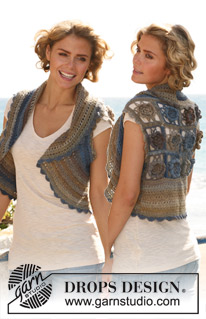



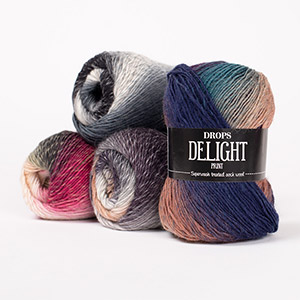

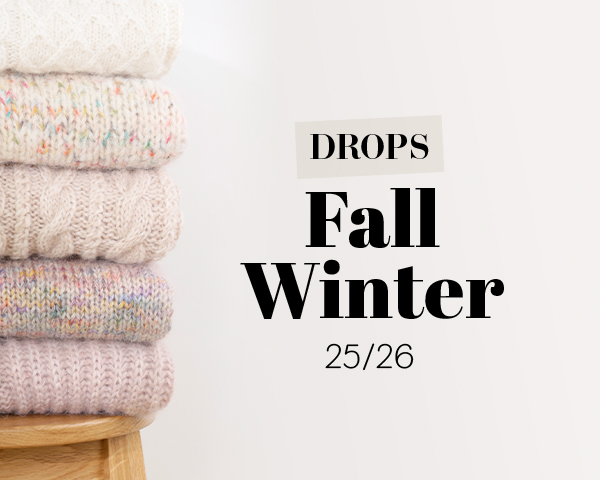


















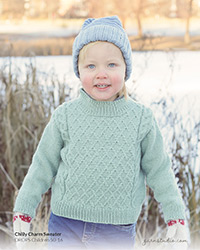
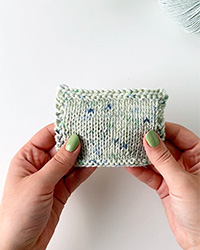

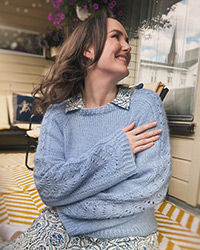

Post a comment to pattern DROPS 129-10
We would love to hear what you have to say about this pattern!
If you want to leave a question, please make sure you select the correct category in the form below, to speed up the answering process. Required fields are marked *.